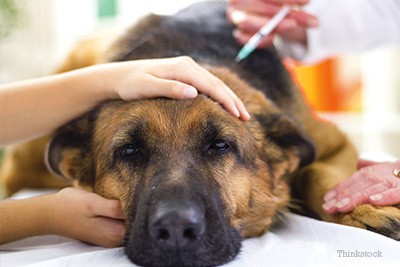Pyometra
Pyometra is a condition that occurs in female, un-spayed dogs, where their uterus becomes infected, leading to life-threatening illness. Middle-aged and older female dogs who have not been spayed are at risk for pyometra. What causes it? When a female dog is ready for pregnancy, her body will prevent immune system cells (i.e., white blood cells) from entering the uterus, because they would interfere with fertilization. In addition, the lining of the female dog’s uterus will thicken for several weeks so her body is prepared to carry a litter. If pregnancy doesn’t occur, the lining of the uterus will get…




